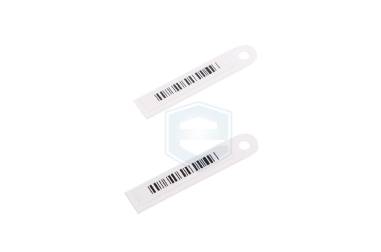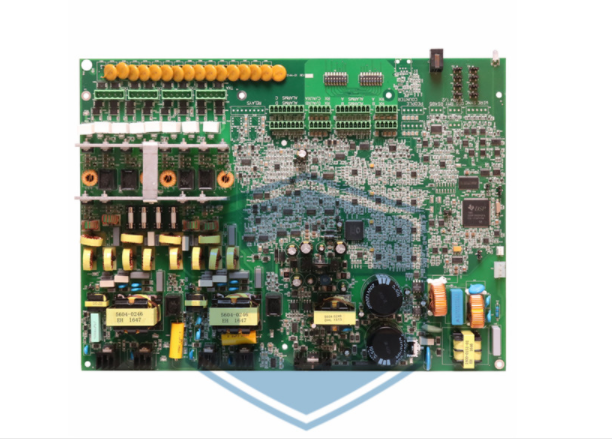EAS is an anti-theft device commonly used in supermarkets, and it is used to implement protection for goods by installing electronic tags on them. The use of EAS has three benefits for store theft prevention: first, it improves deterrence, second, it increases the difficulty of merchandise theft, and third, it recovers the loss of stolen merchandise.
Although the use of EAS has so many benefits, but its drawbacks are also very obvious. Because the use of the electronic label needs cost, manual paste and the limitations of the label itself, so we can't use it on all the goods. This also leads to the goods that do not use the electronic label is not in the scope of protection of the EAS System, such as fresh goods, bulk goods, etc..
So, is it true that goods with tags installed are 100% under EAS protection? No. Whether you use soft tags, snaps, or boxes, experienced thieves can disable the EAS by tampering with them. For example, the soft tag will be torn off, the security buckle will be removed, the security box will be destroyed, etc.

Soft Tags
Since EAS has so many disadvantages, why do we still use it? The reason is simple, any anti-theft equipment is not a panacea, there is a spear must have a shield, before the development of new technology, EAS equipment for the store anti-theft can still play a role.
What is EAS?
EAS is the English abbreviation for Electronic Merchandise anti-theft system, EAS is currently divided into four types, our supermarkets use more wireless radio frequency systems and acoustic magnetic systems. All EAS systems have three components, which are detectors, decoders, and electronic tags.
Ways to enhance EAS theft recovery
Any equipment is dead, only people are alive. the key to the effectiveness of EAS equipment against theft depends on how we use it and whether we want it to work or not. Here we have summarized 5 methods:
1) Develop commodity arming standards
In the process of using EAS, the development of commodity arming standards is very important. Including the use of Anti-Theft Tags of the type of goods, paste the location, the number of arming, arming location, arming time, etc..
For supermarkets that have already established standards for arming merchandise, it is recommended that the arming standards be updated in a timely manner to ensure the applicability of the merchandise arming standards.
For supermarkets that do not have arming standards, it is recommended that they be developed by the Operations Department or the Loss Prevention Department, and a Word or PPT version can be produced. The standard is formulated in a graphic way as far as possible, so that it can be easily replicated and promoted.
2)Improve the arming rate of commodities
In principle, merchandise arming is carried out before receiving goods into the store, but it is difficult to do this, after all, we can not wait for all the goods to be put on the anti-theft label and then shelves for sale. In the case of not affecting sales, we can give priority to arming high loss goods, and other goods can use the night time arming.
When arming merchandise, the arming rate is very important. The higher the arming rate, the higher our chances of recovering from theft. First of all, we need to ensure that the anti-theft tags cover a wide variety of goods, followed by the number of high loss single items arming. These two points are what we need to consider to improve the arming rate.
3) Innovative arming methods
The first one is how to make the anti-theft soft tags more concealed and not easily detected; the second one is how to make the anti-theft tags cover more commodities; and the third one is how to improve the anti-theft effect through the integrated use of soft tags and hard tags.
4) Checking the arming of goods
Any management and implementation is inseparable from inspection, without inspection there is no management. This is very important. Headquarters operations, loss prevention, store managers, store loss prevention managers should regularly check the situation of commodity arming, such as whether the label is correctly positioned? Is there any damage to the goods? Are the goods correctly armed? Is the arming rate in line with the standard, etc. To check the problems, we should arrange the stores to rectify them in time.
5) EAS recovery data analysis
In general, we use the theft statistics table for EAS recovery data, which does not reflect all the arming data we need. The best way to do this is to recreate an "EAS Merchandise Recovery Analysis Sheet" in the theft data statistics table, which is used by both headquarters and stores.
The headquarters' EAS merchandise recovery analysis is tallied and analyzed by month, including store, month, amount recovered, number of recoveries, type of merchandise recovered, number of soft tags used, cost of soft tags used, etc., and can be analyzed using year-over-year.
The analysis of the store's EAS product salvage is done by month, including month, salvage amount, salvage times, number of Soft Tags used, and cost of use. In addition, the analysis can be done quarterly or semi-annually for the types of merchandise recovered.

Basic Approach to Preventing Retail Business Losses
Apr. 16, 2022
What You Need to Know about EAS Security Tag Alerts
Apr. 06, 2022